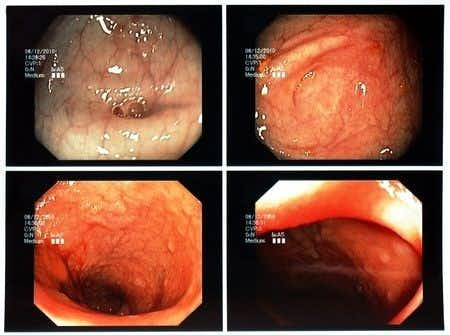This case involves a healthy sixty-two-year-old female patient with no significant past medical history who presented to a medical facility for a routine colonoscopy to remove polyps. She was discharged shortly after the procedure. She returned to the medical center’s emergency department accompanied by her daughter around two hours later complaining of heavy bleeding from her rectum and severe abdominal pain. While waiting to be seen in the ER, she went to use the restroom. When she did not return to the waiting area after a long period of time so her daughter went to look for her. She was found unconscious in a cubicle, in a pool of blood. She was rushed from triage immediately, at which time a sigmoidoscopy was performed, with clips placed in the area where polyps have been previously removed.
After the procedure, the patient continued to have symptoms of abdominal pain and showed signs of a distended abdomen. A CT scan was ordered to investigate the persistent abdominal symptoms but it was not read until four hours later. Four hours later, antibiotics were administered for a suspected surgery-related infection. Once the surgeon in charge of this patient’s care was made aware of the evolving details, the decision was made to perform an exploratory laparotomy. The team found a perforation of about 1 cm, and a large dose of antibiotics was administered intra-operatively. The patient deteriorated postoperatively as the staff had difficulty maintaining the patient’s blood pressure within a normal range. The patient passed away within a few hours of the laparotomy.
Question(s) For Expert Witness
1. What is the standard procedure in the administration of antibiotics to remedy the situation of septic shock from bowel perforation?
2. Was the timing of the emergency surgery within the standard of care?
3. Was there a failure to monitor her hemoglobin and hematocrit levels to maintain the patient’s blood pressure following the laparotomy?
Expert Witness Response E-007288
The surviving sepsis guidelines (Dellinger RP, et al. Crit Care Med. 2013 Feb;41(2):580-637) state that broad spectrum antibiotics should be administered within 3 hours of presentation to the emergency department or within one hour of admission to an intensive care unit once sepsis has been suspected. If a diagnosis of perforated viscus with septic shock was made, an operation should be performed as soon as an operating room is available. However, if the diagnosis was a hemorrhagic shock (and perforated viscus was only diagnosed at the time of operation) then multiple adjuncts can be tried once the patient has been resuscitated appropriately—such as endoscopic management of the bleeding source or angiographic control of the bleeding source. An operation is reserved for failure of endoscopy and angiography in the setting of GI bleeding. In the setting of active, ongoing bleeding, hemoglobin and hematocrit along with coagulation parameters should be measured every 4-6 hours at a minimum—usually more frequently as they are checked periodically after the administration of component transfusion therapy.
About the author
Dr. Faiza Jibril
Dr. Faiza Jibril has extensive clinical experience ranging from primary care in the United Kingdom, to pediatrics and child abuse prevention at Mount Sinai Hospital, to obstetrics in Cape Town, South Africa. Her post-graduate education centered on clinical research and medical ethics. Dr. Jibril is currently Head of Sales in the US and Canada for Chambers and Partners - a world leading legal ranking and insights intelligence company.

